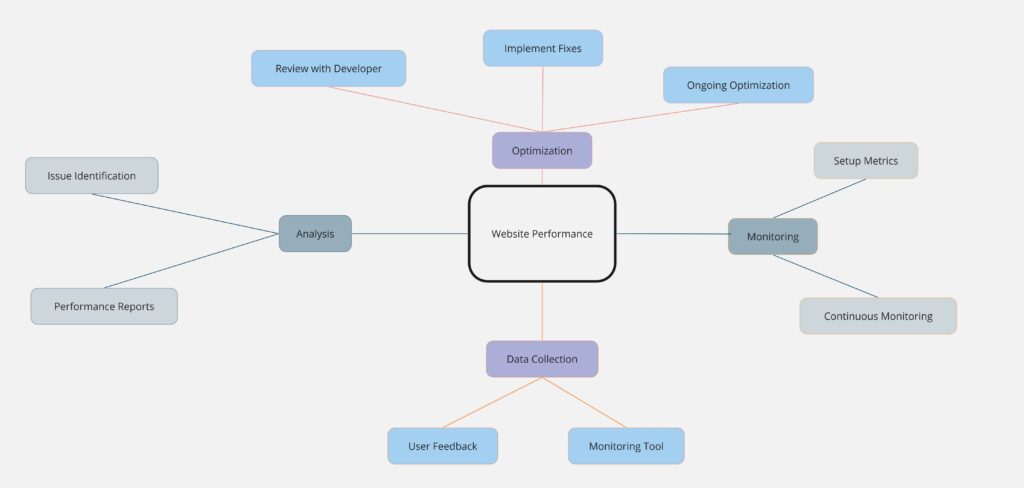Oh, so you’re diving into the wild and wacky world of ecommerce, huh? Dreaming of a custom ecommerce website that doesn’t just sit there collecting digital dust but actually coaxes the wallets open? Well, you’ve stumbled into the right corner of the internet, my friend! Let me be your guide through the magical journey of creating an online store that’s more irresistible than a midnight snack.
First off, let’s be clear: slapping together an ecommerce site isn’t just about throwing up some product pictures and calling it a day. Oh no, it’s like planning the most epic party – you need the right venue (aka platform), the coolest setup (user-friendly design), and, of course, the snacks (your products) need to be on point.
Now, with everyone and their grandma selling online, standing out is more like trying to be heard at a rock concert. But fear not! I’m here to spill the tea on how to jazz up your site so that Google and friends can’t help but show you off, making sure those digital passerby can’t help but drop in and shop.
Whether you’re the entrepreneurial equivalent of a seasoned rockstar or just picked up the guitar, this article is your backstage pass. So, grab your metaphorical pen and paper, and let’s rock this ecommerce show, turning your website into the main stage attraction that not only draws the crowd but also gets them to throw their money at the stage. Let’s get this party started!
Why a Custom Ecommerce Website is Important for Driving Sales
Alright, folks, gather around the digital campfire, and let me spin you a tale of ecommerce triumph that goes beyond the land of boring, seen-it-a-million-times websites. If you’re itching to leave a mark in the online bazaar, buckle up! We’re not just making a website; we’re crafting a digital masterpiece that’ll have your competitors weeping into their keyboards.
First off, throwing a generic template into the mix and calling it a day is like showing up to a costume party in a T-shirt that says “This is my costume.” Not cool, right? A custom ecommerce website is your secret weapon in the online gladiator arena, where only the boldest and most unique warriors survive.
The Infinity Gauntlet of ecommerce, with every stone carved to fit your brand’s soul and your audience’s desires. That’s what custom means – it’s your brand, your rules. Want a neon green ‘Buy Now’ button that plays disco music when clicked? If that’s your jam, why the heck not?
And let’s talk about making it rain, shall we? A custom site is like having a personal sales ninja at your service. A smooth checkout process, powerful call-to-action buttons, and product descriptions that entice your customers to buy.
But wait, there’s more! As your empire expands, your digital fortress can grow with you. Need to tack on a drawbridge or a moat filled with social media integrations? No problem. With a custom site, your business will conquer new territories as it grows, morphs, and expands.
Remember, as we embark on this epic journey, we’re not only setting out for success; we’re crafting a legend. Forge a site that’s not only easy on the eyes, but a magnet for sales and success.

Understanding Your Target Audience and Their Needs
Okay, before we dive into the deep end of custom ecommerce website development, let us take a moment to unleash our inner Sherlock Holmes. Understanding your target audience is like solving a mystery, with clues scattered throughout the enormous terrain of the internet. You’re not simply making a website; you’re creating a digital paradise for your soon-to-be loyal supporters.
First things first, let’s talk about buyer personas – think of them as character bios for the stars of your show. Furthermore, the sketches represent your ideal customers, complete with likes, dislikes, midnight snack preferences, and shopping habits. Your digital storefront can be tailored to appeal to either Techie Tim or Fashionionista Fiona by knowing each persona inside out.
Now, don your detective hat and scope out the competition. This isn’t about copying homework; it’s about seeing where they left gaps wide enough for you to roll in with a marching band and steal the spotlight. What unique offerings can you bring to the table? Maybe it’s an unmatched return policy, products that make people go “Wow, I NEED this in my life,” or perhaps a user experience so smooth, visitors can’t help but sing praises.
Understanding what makes your audience tick and where others have missed the mark is like finding the map to El Dorado. With this golden knowledge, you’re not just building a website; you’re crafting a beacon that guides your target audience straight to your virtual doorsteps, wallets in hand, ready to bask in the glory of what you have to offer.
Build a destination that will have your target audience clicking ‘add to cart’ faster than you can say “custom ecommerce success”.
Planning Your Website Structure and Design
The success of an ecommerce website heavily relies on its structure and design. A well-organised and visually appealing website layout not only enhances the user experience but also encourages visitors to stay longer and explore your products.
Start by creating a sitemap that outlines the structure of your website. A clear and logical hierarchy ensures that visitors can easily navigate through your website and find what they’re looking for. Consider categorising your products into relevant and intuitive sections to make the browsing experience seamless.
When it comes to design, simplicity is key. Opt for a clean and modern design that showcases your products and brand in the best possible light. Use high-quality images and videos to grab the visitors’ attention and highlight the unique features of your products.
In addition to aesthetics, your website design should prioritise usability. Ensure that your website is mobile-responsive, as an increasing number of customers are shopping on their smartphones. Implement intuitive navigation menus, search bars, and filters to help visitors find products quickly and easily.
Remember, the goal is to create a visually appealing website that is easy to navigate and makes the purchasing process effortless for your customers. By investing time in planning your website structure and design, you set a strong foundation for a successful custom ecommerce website.
Choosing the Right Ecommerce Platform for Your Business
When it comes to building a custom ecommerce website, choosing the right platform is crucial. The platform you select will determine the functionality, scalability, and ease of use of your website.
Consider your business’s specific requirements and goals when evaluating different ecommerce platforms. Look for features such as inventory management, order tracking, customer reviews, and integration with popular payment gateways. Additionally, ensure that the platform offers customizable templates and the flexibility to implement custom designs.
Some popular ecommerce platforms to consider are Shopify, WooCommerce, Magento, and BigCommerce. Each platform has its own advantages and caters to different business sizes and needs. Take the time to research and compare the features and pricing of each platform before making a decision.
Your website’s design and layout can be customised once you’ve chosen an ecommerce platform.
Optimising Your Website for Search Engines (SEO)
Alright, let’s dive into the world of Search Engine Optimization (SEO), or as I like to call it, the “Secret Elixir of Online” (SEO, get it?). Imagine the internet as a ginormous library and Google as the ever-so-picky librarian. Your mission? To make your ecommerce website the librarian’s favourite book. Why? Because being on the first shelf (aka the first page of search results) means everyone sees you first, and in the ecommerce game, visibility is everything.
Kick things off with a treasure hunt for keywords. Potential customers use these words to summon products like yours from the depths of the search engine sea. Weave these keywords into your website’s very fabric – the content, the meta tags, the URLs, and even the image alt tags. But beware, keyword stuffing is the dark magic of SEO. Overdo it, and you’ll find yourself banished to the nether regions of search results.
Now, let’s talk about content. Would your website be a page-turner or a snooze-fest? Your content should captivate your audience with every word. Your website should be full of fascinating blog posts, mesmerising product descriptions, and heartfelt customer testimonials. This not only tickles the fancy of Mr. Google but also cements your status as the go-to guru in your industry.
Speed, my dear Watson, is also of the essence. A slow-loading website is like showing up late to your own concert; the crowd gets antsy, or worse, leaves. Select a hosting provider like you’re auditioning drummers; only the best will do. Your audience will not bounce faster than a rubber ball if your website loads faster than greased lightning.
These SEO strategies won’t just help your website rank higher; they’ll also engage visitors and, ultimately, convert them into customers. Let’s begin the magic!
Implementing Secure Payment Gateways and Customer Data Protection
One of the most important components of creating a specific custom ecommerce website is guaranteeing the security of your clients’ sensitive data. Implementing secure payment channels and strong data protection procedures is critical for establishing confidence and credibility with your clients.
Start by choosing a reputable payment gateway provider that offers secure encryption and fraud protection. Popular options include PayPal, Stripe, and Authorize.Net. Display trust seals and security badges prominently on your website to reassure customers that their payment information is safe.
In addition to secure payment gateways, implement SSL encryption on your website to protect customer data during transmission. An SSL certificate ensures that all data exchanged between your website and the customer’s browser is encrypted and cannot be intercepted by malicious third parties.
Regularly update your website’s software and plugins to patch any security vulnerabilities. Conduct regular security audits and penetration testing to identify and address any potential weaknesses in your website’s security infrastructure.
By prioritising customer data protection and implementing secure payment gateways, you create a safe and trustworthy online shopping environment that encourages customers to make purchases with confidence.
Adding Essential Features and Functionality to Enhance User Experience
Alright, let’s gear up for a journey into the heart of creating a customer-magnet ecommerce website. It’s not just about slapping products on a page; it’s about weaving a web of features so irresistible that your visitors can’t help but hit that sweet ‘Buy’ button.
Picture your website as a bustling marketplace, where every stall (or page) is designed to enchant, inform, and, most importantly, convert browsers into buyers. Here’s how to sprinkle some of that magic dust:
1. Wizard-Level Search Functionality
Imagine a magical time where customers can whisper what they seek, and it reveals exactly where to find it. That’s your search bar, equipped with filters faster than a sorting hat at deciding whether it’s a red potion or a blue elixir they need. Price, colour, size, and the approval of fellow adventurers (customer ratings) all guide their quest, making the journey to the perfect find a breeze.
2. A Personal Shopping Conjuror
Every shopper dreams of a mystical guide that knows their heart’s desires even before they do. Enter your recommendation engine, a wizard that conjures up related treasures and enticing upsells, based on the arcane knowledge of past quests (browsing and purchase history). This not only enchants your customers but also swells their treasure troves (and your coffers).
3. The Power of the Crowd
In the age of tales and legends, the endorsement of fellow travelers is worth more than gold. Showcase the bardic tales (reviews), the stars bestowed by the common folk (ratings), and the parchment proofs (testimonials) of satisfied customers. Let their voices echo through your halls, weaving a spell of trust and desire that draws others to your wares.
4. A Portal to the Treasure Vault
The final leg of the journey—the checkout process—should be as smooth as a teleportation spell. No one likes to traverse through a labyrinth when their hands are full of treasures. Make it swift, make it easy, and offer as many paths (payment options) as there are stars in the sky. Be as clear as a crystal ball about when and how their prized possessions will arrive at their doorsteps to keep doubts at bay.
Incorporating these elements into your digital domain doesn’t just make it a place to shop; it transforms it into an adventure, a journey, a quest that your customers will return to, time and again. Create not just a website, but a realm where every click leads to discovery, satisfaction, and, most importantly, conversion.
Testing, Launching, and Promoting Your Custom Ecommerce Website
Ah, the grand finale of your ecommerce odyssey – the launch! But before we release the confetti and pop the champagne, there’s a crucial step that stands between your masterpiece and the adoring public: testing. Think of it as the dress rehearsal before the grand opening night. Without it, you risk the equivalent of forgotten lines, wardrobe malfunctions, and stage props that just won’t cooperate.
Act 1: The Usability Test
Gather a troupe of volunteers—your focus group or beta testers—to take your site for a spin. From discovering your products to making a successful purchase, have them mimic the experience of a customer. Their quest is to unearth any dragons—usability issues that could scare away your real audience. This feedback is like gold; it will guide you in smoothing out any rough edges and ensuring the path to checkout is as clear as a moonlit night.
Act 2: The Compatibility Check
In this digital age, your audience will arrive on devices as varied as the creatures of the land: smartphones, tablets, desktops, each with its own view of the world (browsers). Your mission is to ensure that your website welcomes all, no matter their choice of steed or scroll. Test across a broad spectrum to guarantee that your site is as responsive and adaptable as a seasoned traveller.
Act 3: The Performance Preview
Here, speed is the name of the game. Your website should load faster than a minstrel can strum his next chord. This act is all about optimising for the quickest load times, ensuring that no visitor is left waiting at the gates.
The Grand Opening
With the tests passed and the website standing tall and proud, it’s time to lift the curtain and unveil your creation to the world. Drum up excitement through every channel at your disposal—social media, email campaigns, and perhaps even alliances with influencers. Sweeten the deal with opening promotions or exclusive previews, making the first visit to your site as enticing as the opening night of a hit play.
The Encore
But the show doesn’t end with the launch; it’s just the beginning. Keep the spotlight on your site with a continuous performance of digital marketing—SEO, SEM, social media serenades, and content that captivates. Your aim is to keep the audience coming back, long after the initial applause has faded.
So, take a deep breath, and let’s make sure your ecommerce site debuts to a standing ovation, ready to enchant customers and critics alike.
Monitoring and Analysing Website Performance
Creating an unique e-commerce website is a continuous process that calls for constant observation and evaluation. Key performance indicator tracking helps you find areas for development, improve your website, and increase revenue.
Start by tracking crucial indicators like website traffic, conversion rates, bounce rates, and average order value using web analytics tools like Google Analytics. Regularly examine this data to see patterns and trends that might guide your website optimization and marketing tactics.
Monitoring your website’s traffic, products viewed, and time spent by customers is important. Using this data, you can determine what products to offer, improve your website’s navigation, and tailor your selling process.
Pay attention to reviews and comments left by customers to find out how your target market views your website. As soon as possible, resolve any problems or grievances to increase client happiness and loyalty.
Tracking and evaluating your website’s performance regularly will help you increase sales, beat your competition, and optimise your site.

Conclusion
And there you have it, brave explorers of the digital commerce frontier! Crafting a custom ecommerce website that not only draws the crowd but turns browsers into loyal customers is an epic quest—one that requires a mix of art, science, and a dash of magic. The eight critical steps we’ve embarked upon are your map to the treasure chest of ecommerce success.
- Know Thy Audience
- Architect Your Digital Kingdom
- Select Your Steed Wisely
- Summon the Search Engine Spirits
- Fortify Your Gates
- Enchant With Features and Functionality
- Test Your Battlements
- The Continuous Quest
Embarking on this journey requires not just tools and tactics, but a heart willing to listen, learn, and adapt. Your ecommerce website is more than just a store, it’s a beacon for your community and a fortress against your competitors.
With perseverance, insight, and a bit of digital wizardry, your ecommerce site will not only survive but thrive, growing from a humble market stall into a bustling bazaar of wonders. So, ready your tools, gather your allies, and set forth on this grand adventure. Moreover, the digital realm awaits, and its riches are there for the taking. Let the building of your ecommerce empire commence!





What a stuff of un-ambiguity and preserveness of valuable familiarity about unexpected feelings.
Thanks for finally writing about > Custom Ecommerce Website | 8 Crucial Steps | Aavivvi
< Liked it!
You actually make it appear really easy together with your presentation but
I in finding this matter to be really something which I
think I would never understand. It sort of feels too
complicated and extremely huge for me. I’m looking ahead on your subsequent put up, I will try to get the dangle of it!
Escape roomy lista